ENVE First to Bring Hookless Rims to Triathlon
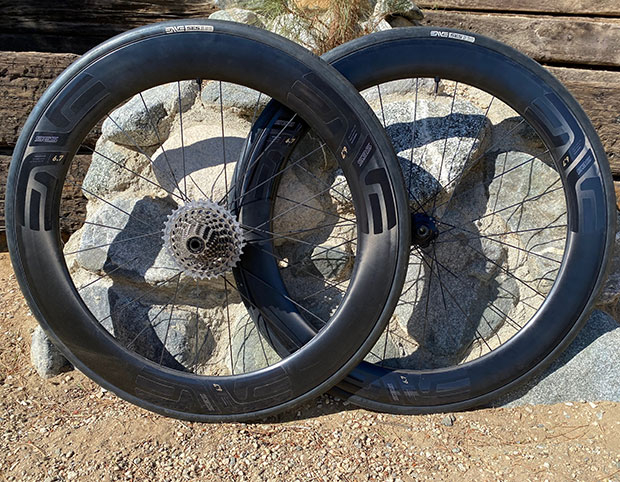
The march to hookless road continues but until now hookless rims on road wheels have been confined to road, all-road, and road aero. With rare exceptions wheels with hookless rims were made for road and gravel, not for triathlon or time trial.
ENVE changes that with the 6.7, a wheel that performs surprisingly well in ENVE’s own testing – the surprise due to this wheelset’s fairly shallow rim depths. The 6.7 rear wheel is 67mm deep as one would expect, but the 6.7 front is only 60mm deep. Each wheel is optimized for its placement on the bike with the front wheel slightly fatter than the deeper rear wheel, 30mm versus 29mm of outside width.
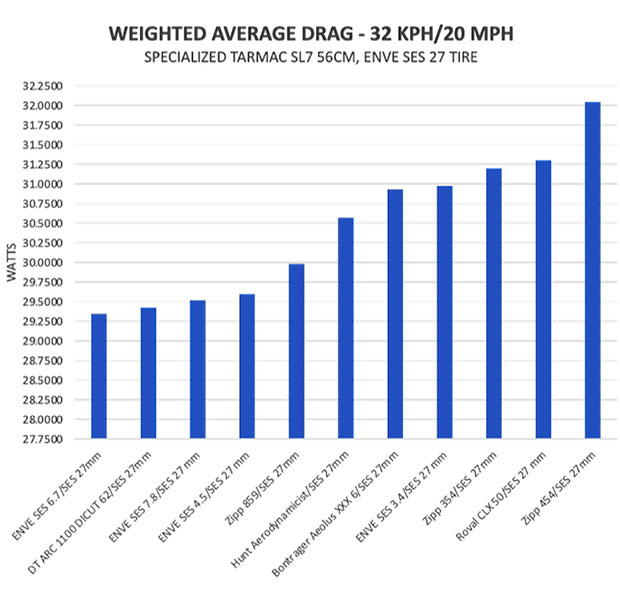
The 6.7 is part of a major ENVE road and gravel launch, and now its 2.3 (arguably the lightest wheelset ever made, cracking the 1200g barrier), the 3.4, and the 4.5 are all hookless. ENVE is now almost entirely hookless road, keeping company with Zipp and CADEX.
As a reminder, hookless refers to a style of tubeless rim. Most tubeless rims carry over from their tubed cousins the “bead hook,” which helps lock the tire onto the rim. The bead hook solves a problem, but gives rise to other problems, both in performance and in manufacturing. Getting rid of that bead hook means the rim wall is straight, just as it is in almost every other tubeless rim application (cars, motorcycles, wheelbarrows). Bicycle tires are “high pressure” and that has been the reason the bead hook remains.
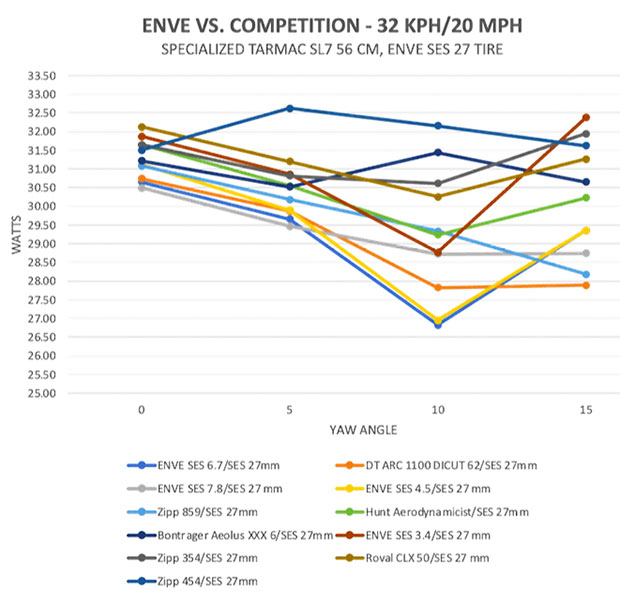
What has given the industry permission to get rid of the bead hook? Wider rims and higher air volumes. A typical road rim from 20 years ago had an inner bead width – the inside distance across the rim – of 15mm. That grew over the years to 17mm, 19mm, and a lot of rims today still are made with 19mm bead widths. Then the rim grew to 20mm and larger, and this has been the case both for hooked and hookless road wheels. Almost all new road wheels that come to Slowtwitch for testing today feature inner bead widths of at least 22mm and up to 25mm, whether they have bead hooks or not. The ENVE 6.7 has an inner bead width of 23mm, front and rear.
As these rims have gotten wider, the tires made for them have likewise grown in width and volume, from 20mm to 23mm, 25mm and many people today believe that 28mm and even 30mm can be very fast – perhaps ideal – tire sizes not just for road race but for triathlon. The optimal air pressures in these wheel/tire systems have decreased as the volumes have grown. Indeed, the 27mm tire that ENVE makes and considers optimal for the 6.7 might be ridden at 60 to 70psi for optimal speed. This lower pressure means bicycle tires can now use the same hookless tech that are used on other tubeless rim/tire systems.
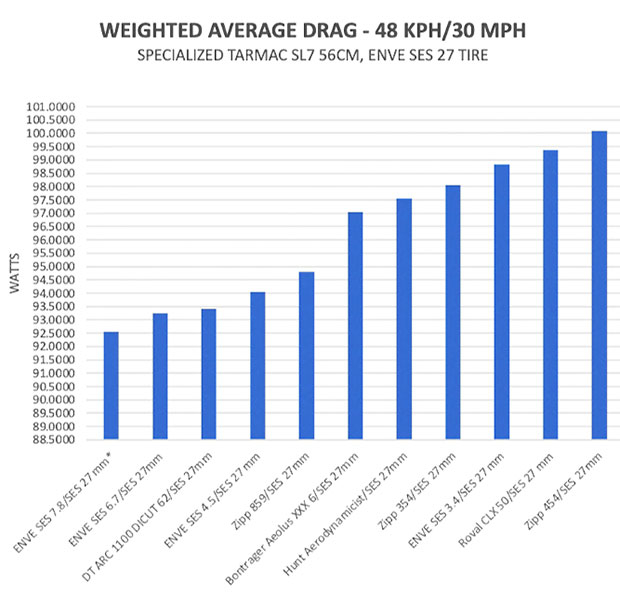
The 6.7 matches or is very close to ENVE’s 7.8 in almost all speeds and yaws in the wind tunnel testing ENVE provided for this wheel launch, which means 6.7 should be the easier of the two wheelsets to handle in windy conditions and without much if any aero penalty. For example, the one area where the 7.8 with a 25mm tire obviously beats the 6.7 with a 27mm tire (when mounted on one particular bike) is in a 15° yaw, but when that sidewind hits you what do you want, a slight bit more speed, or the confidence to remain in the aero position? The 6.7 wheelset comes in at just under 1500 grams for the pair, which is light for a wheelset with rims this deep.
The only governing body making standards currently for hookless road is the European ETRTO, and that entity says that the narrowest tire on a hookless system with a 23mm inner bead width is 25mm. This wheelset could be ridden with, say, a Continental GP 5000 S TLR, or the lightning fast Vittoria Corsa Speed, each in that 25mm size. But at 25mm heavier riders might bump up against another of the ETRTO’s stated limit: 72.5psi for hookless bicycle wheel systems. Whether a tire in that 25mm size or the larger 27mm or 28mm tire is the faster choice I don’t know, but ENVE says the 6.7 was optimized for its 27mm tire you see in the images herein.
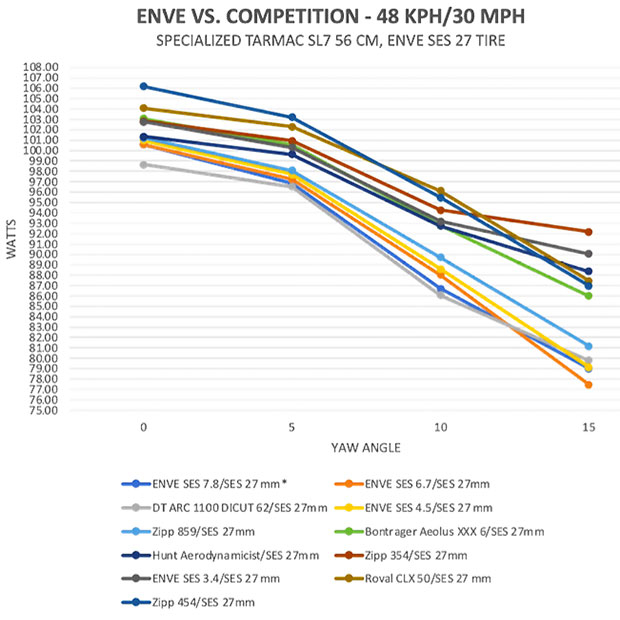
One thing I noticed on the 6.7: ENVE prints, right on the rim of each wheel, that max pressure is 90psi. File that for a moment. Bear in mind that most of the new tubeless road tires coming out today (launched within the past several months, and those with launches upcoming) can be ridden with hooked or hookless systems, and they often have only the hooked max pressure embedded in the casing or on the heat stamp. When a rim says its max pressure is 90psi and a tire says its max is 94psi, the invitation is for users to ride the system at 90psi or thereabouts. I predict the industry will push back at this. Tire makers might not take well to the wheel maker’s encouragement to pump their tire right up to the limit of safety. Continental, for example, tests their 5000 S TLR to 130 percent of the max pressure. They state that the max pressure for hookless systems is 72.5psi, and 130 percent of that is 94.25psi. ENVE is telling its users their wheel can hold 90psi, which appears very close to Continental’s testing threshold if I understand Continental’s testing thresholds and protocols.
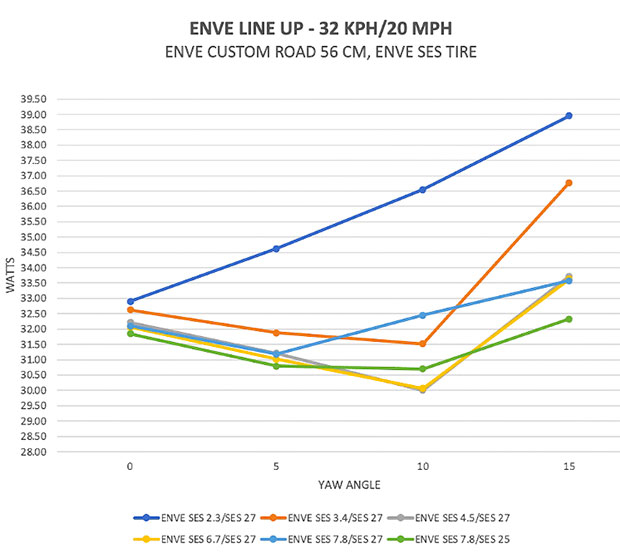
This is curious to me because for most riders the optimal pressure for a 25mm tire will probably be in the 70psi range, and for a 28mm tire probably in the 60psi range. According to my calipers, with ENVE’s 27mm tire mounted, the wheels are 108% and 105% of the width of the inflated tire (remember, the rear rim is 1mm narrower than the front). So, with a 27mm or 28mm tire mounted this system obeys the “rule of 105” and I would probably ride this system with no more than 65psi of pressure. That 90psi max pressure printed on the rim is either an unforced error, or ENVE can see around a corner than I can’t.
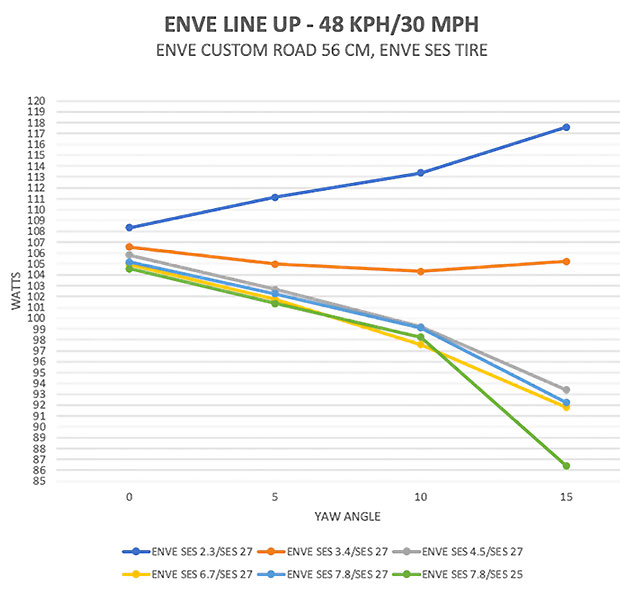
I’ve been using this wheelset for a few weeks with ENVE’s own 27mm SES Road Tire and that tire performs pretty well in independent rolling resistance testing. It’s among the fastest vulcanized tubeless road tires, and surprisingly (to me) doesn’t experience much if any sidewall leak at pressure without sealant installed, but of course you must ride it with sealant installed, for a number of reasons. There certainly is not the annoying amount of leakdown you might experience with, say, a skinwall tire.
ENVE deploys its 40-tooth ratchet hub in this wheelset and the set I’ve been using has an XDR driver, and there’s a SRAM 12-speed cassette on the wheels you see here. Shimano is of course available as an option and as with all current wheels made by just about every reputable brand the driver bodies are easily interchangeable by the user.
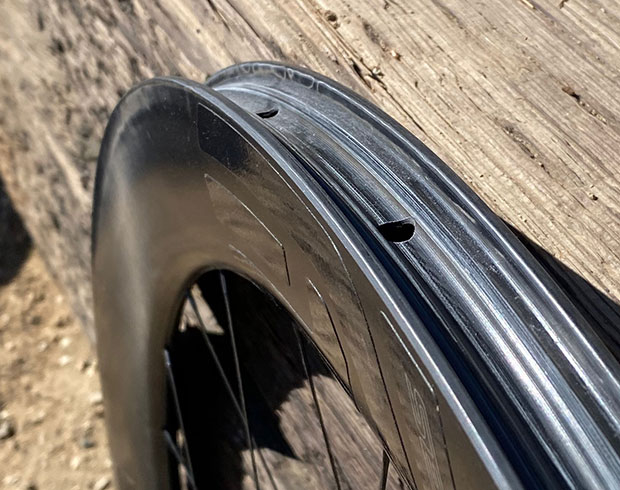
The rim wall is thick, but the transition from rim to tire is smooth. ENVE says it has a patent on its thick rim wall. ENVE uses a beadlock on the rim shelf. This is a hump on the shelf of the rim that you’ll find on many (but not all) rims, both hooked and hookless. This accentuates the pop when the tire beads up, because the air pressure must push the tire over the hump and then it slam against the rim wall and into the bead seat. There’s no subtlety here; the bead pops are loud. I had no trouble mounting the tires or getting them to bead up.
ENVE’s use of hookless predates by 3 years the ETRTO’s first hookless standards, published in 2019. Because of that ENVE has had to test tires to make sure they’re compatible with its wheels. Whether that is any longer necessary is debatable. Wheel makers only need to make their wheels to the ETRTO’s published standards, which largely paralleled what ENVE was already doing. This frees brands like ENVE up to just make wheels according to that published standard, and the onus is on the tire makers, to make sure their tires work on a rim built to this standard. To me, this means ENVE no longer needs to test tires, or would mean that if it stuck to the ETRTO’s 72.5psi tubeless max. Because of that 90psi max on its wheels I assume ENVE will keep testing every brand’s tires.
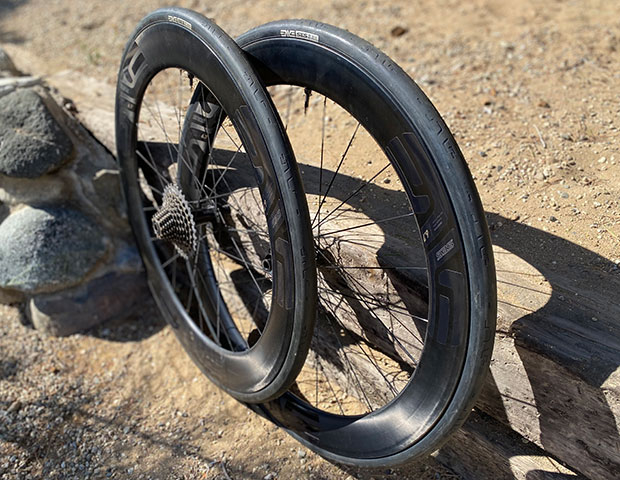
I have two beefs – or are those beeves – with this wheelset. First is the needlessly confusing max pressure guidance. Second might not be a real beef because these might be sent to you different in a production setting, but, I don't think consumers want to buy wheel kits. They want to buy wheels. For sure, I had no trouble putting on the tubeless tape and installing the valve, but I would like to see the entire industry move toward wheels that come ready for tires to be mounted. Because this is a hookless system, there's no way to ride this wheel with standard rim tape. So install the tubeless tape. And the valve. At the factory.
The ENVE 6.7 wheelset will cost $2,850, about in line costwise for premium road wheels. This is the first wheelset make in a hookless config that a triathlete would want to consider. I don’t believe it is the last such introduction by premium wheels brands this year. Well more than half of top IRONMAN style pro triathletes are now racing on tubeless systems, and tubeless is the dominant tech used in Spring Classics. What held road tubeless back was the lack of really fast tires made for tubeless and that’s what has held hookless back until now; 2022 will be a pivotal year.
Read more about ENVE’s 6.7. There is a discussion now ongoing about this wheel on our Reader Forum.


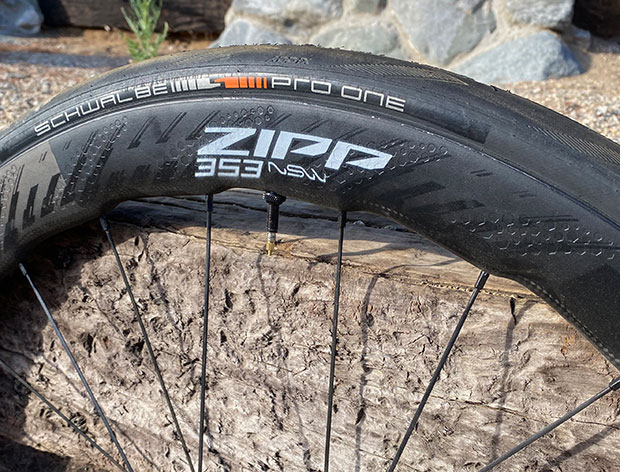

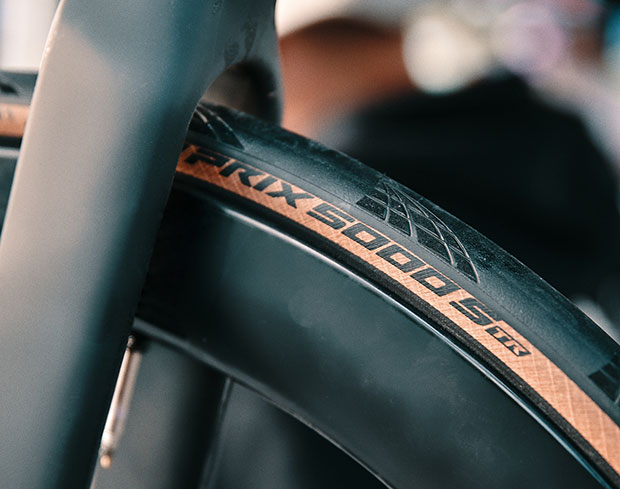
Start the discussion at slowtwitch.northend.network